One of the highlights for me of our trip to the La Fortuna area over the last week was a visit to the Maléku people of northern Costa Rica.
Costa Rica has several rich indigenous cultures. The Maléku are the northernmost indigenous people in the country, and while the smallest group, numerically speaking, they have managed to protect their language and culture to an amazing degree.
In this post I would like to share with you a bit of background about the Maléku language and its larger linguistic context.
A bit of background on language families
Human languages can be understood metaphorically as being like human families: they descend from common ancestors. So for instance, Spanish, Italian, and French are all modern “descendants” of spoken Latin. Little dialectal changes piled up over the years as Latin speakers spread out, and eventually people at the margins of the expansion could no longer understand each other easily. At that point what were once dialects became distinct but related languages.
Here’s a map which gives an approximate idea of the distribution of the world’s language families as they stand today. Estimates vary, but there are certainly at least a few hundred distinct families (comprising perhaps seven thousand individual languages):
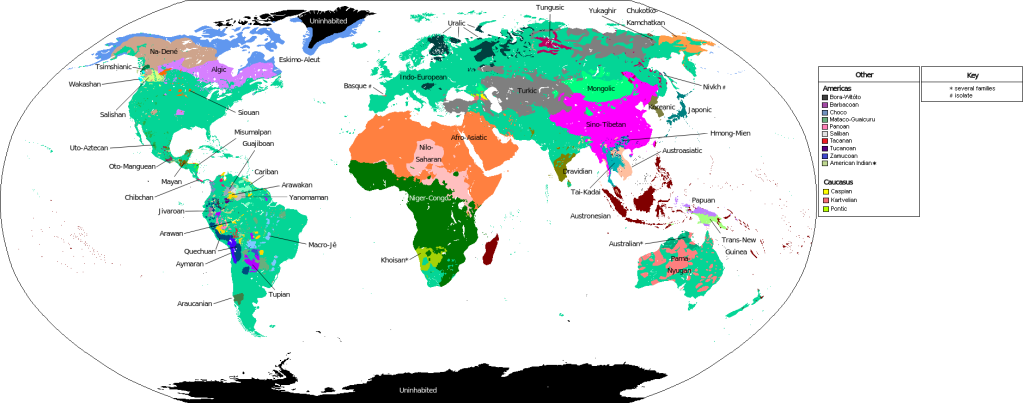
The Chibchan languages
Maléku is a member of an interesting family called Chibchan. There are many Chibchan languages spread across central and South America. Today, Chibchan languages are or were spoken in Honduras, Nicaragua, Costa Rica, Panama, Colombia, and Venezuela. Maléku is listed in the map below by another name, Guatuso, which is still sometimes encountered. Rama and Pech are the only Chibchan languages spoken further north than Maléku. It is believed that the Chibchan languages originated in South America and moved north.
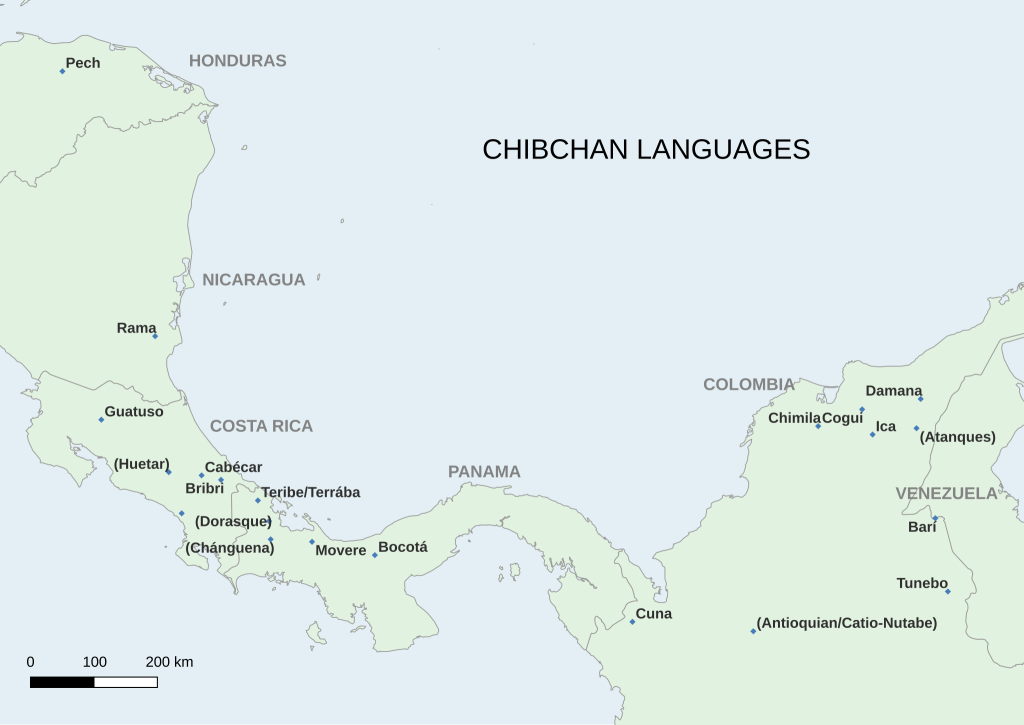
“File:Chibchan languages map.svg.” Wikimedia Commons. 26 Feb 2025, 09:29 UTC. <https://commons.wikimedia.org/w/index.php?title=File:Chibchan_languages_map.svg&oldid=1002657845> 25 Oct 2025, 23:06.
Maléku today
There are three Maléku towns today, Tonjibe, Margarita, and El Sol. We passed briefly through Margarita on our way in to Tonjibe, but we did not visit El Sol.

In fact, the Maléku cultural area is much bigger than just these small towns; in an unfortunately familiar story, much of their land has fallen into non-Maléku hands via sometimes shady dealings. Their stories detail a much larger area, including the Arenal volcano and the area around what is now La Fortuna, as well as the Río Negro river basin area. You can read a brief account by the Maléku of their territory and attempts to regain and reforest it here.
Even our brief visit was sufficient to see that the language is still spoken, even though most people there also speak Spanish (and some speak some English).
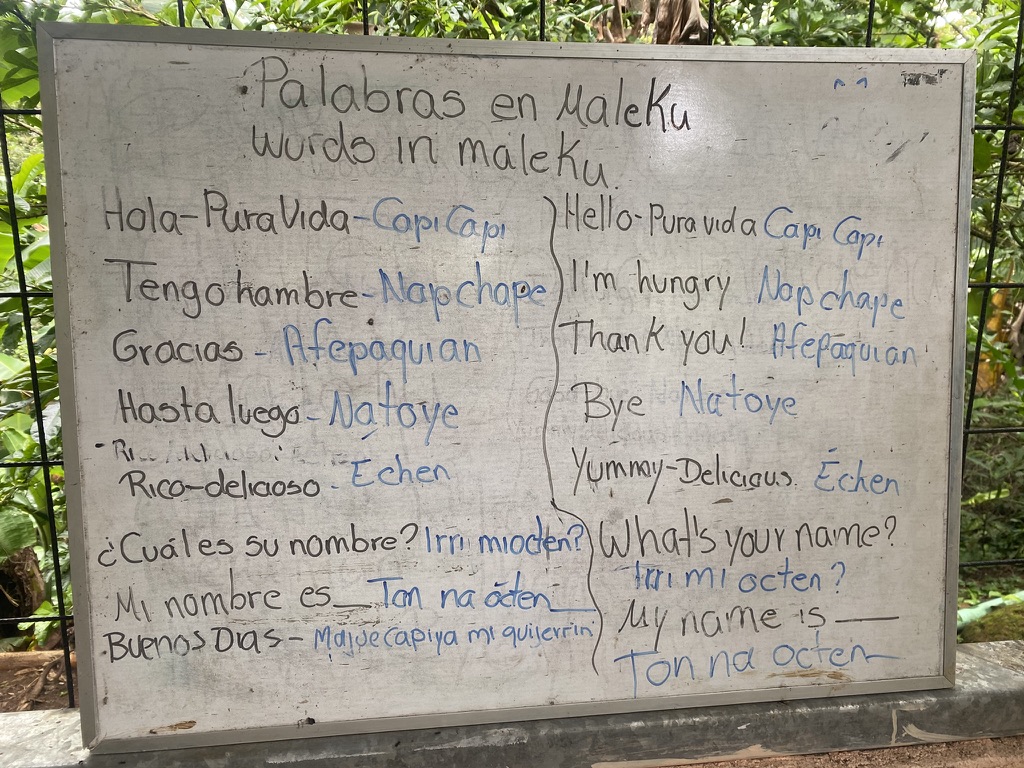

| Español | English | Maleku |
|---|---|---|
| Hola / Pura vida | Hello / Pura vida | Capi Capi |
| Tengo hambre | I’m hungry | Napchape |
| Gracias | Thank you | Afepaquian |
| Hasta luego | Bye | Natoye |
| Rico / delicioso | Yummy / Delicious | Échen |
| ¿Cuál es su nombre? | What’s your name? | Irri mi octen? |
| Mi nombre es ___ | My name is ___ | Ton na octen ___ |
| Buenos días | Good morning | Majuecapiya mi quijerrin |
The language has been well documented compared to other Chibchan languages. The linguist Adolfo Constenla Umaña specialized in Chibchan languages of Costa Rica, and Maléku in particular, for decades. His work at the University of Costa Rica (UCR) has continued in the wake of his unfortunate death in 2013 — extensive resources on the language have been published online as part of the Dipalicori Project at UCR. There are a whole range of contents there, from illustrated plant dictionaries…
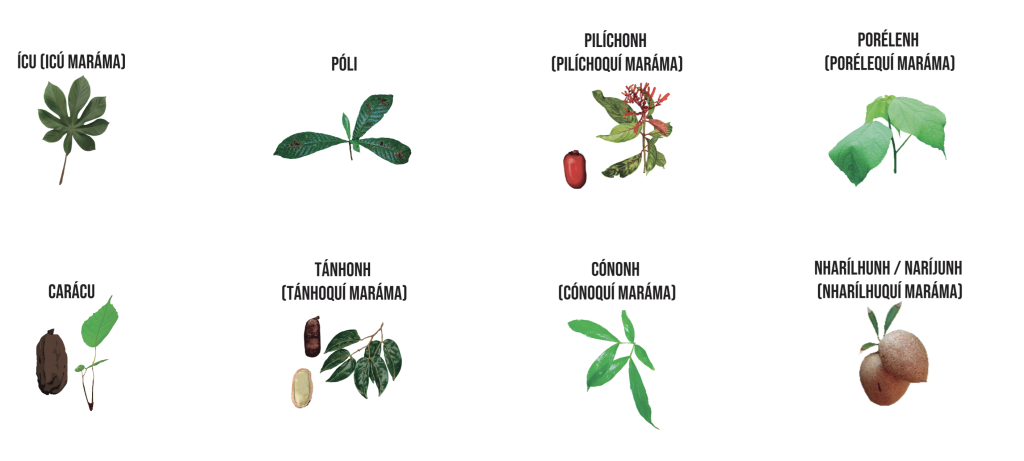
…to diagrams of how traditional Maléku houses are made:
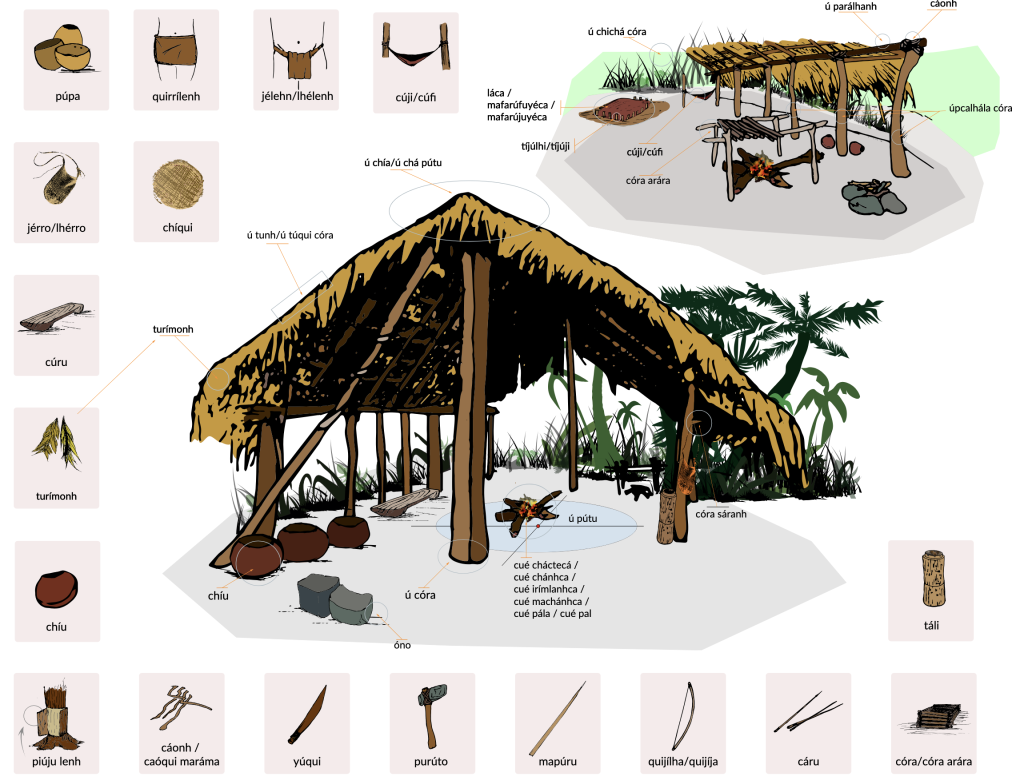
…to graphic novels about some of the darker periods of Maléku history.
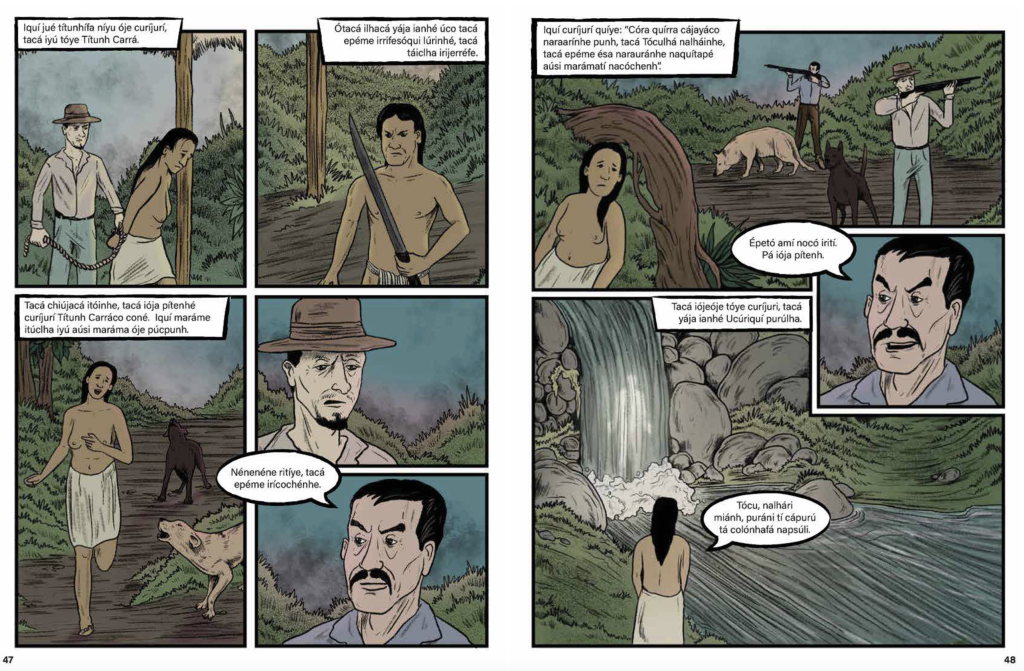
How to Visit the Maléku
If you are in the area and would like to meet the Maléku you can check out their web page here:

They’re also on Facebook, and you can reach them on WhatsApp at +506 8890 6509.
Leave a Reply to Carol Letson Cancel reply